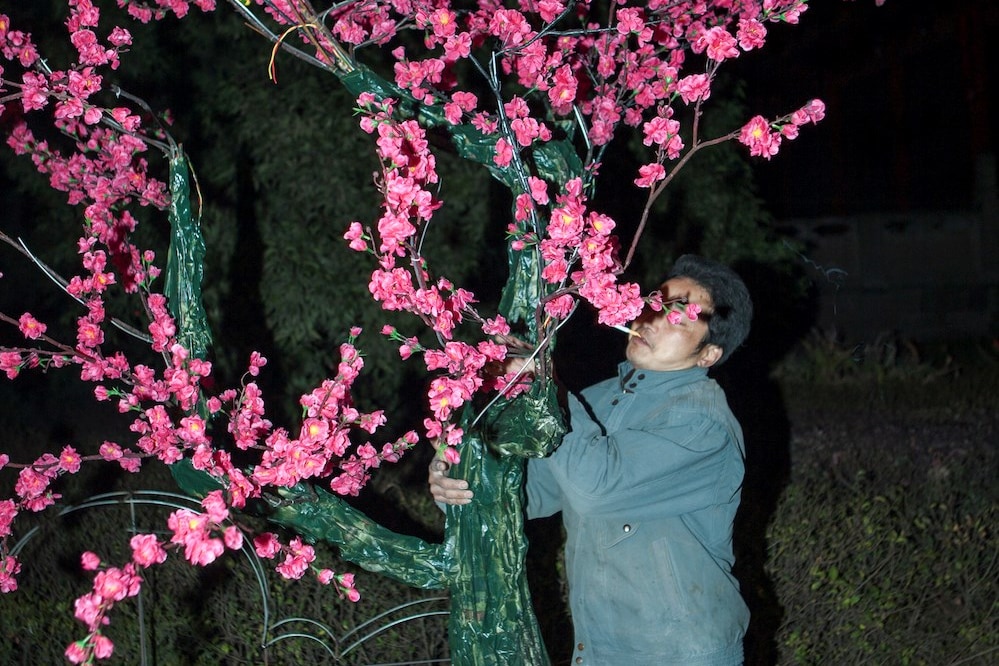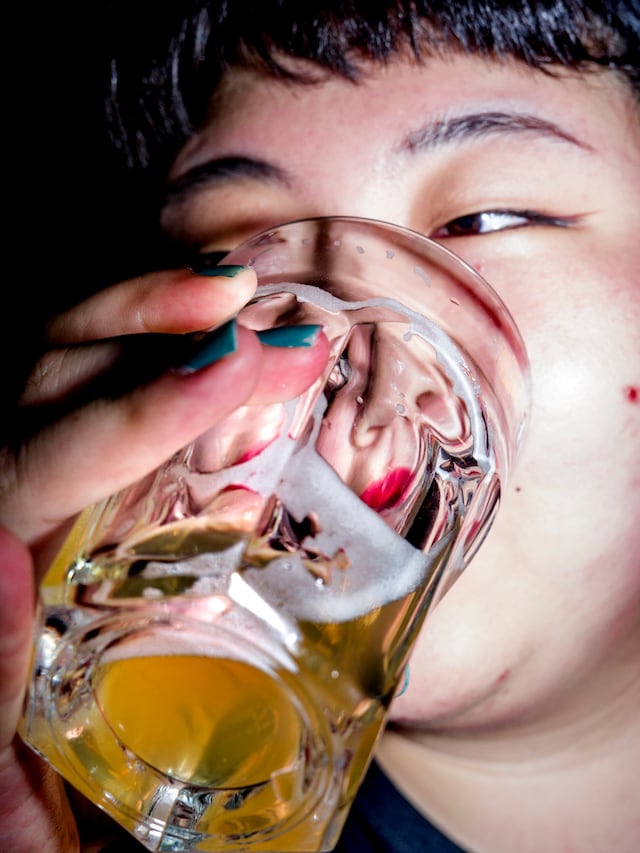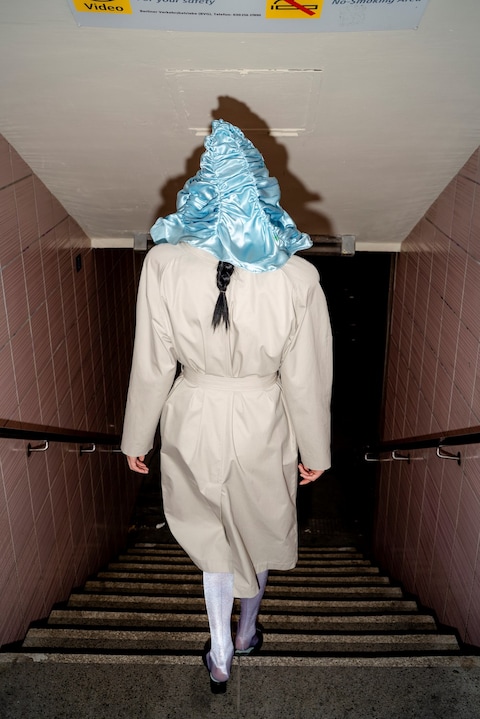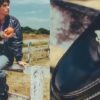
Rewrite
As his new exhibition opens in Berlin, Feng Li talks about capturing characters across the world in Chengdu, Paris, Tokyo, Shanghai and Berlin
For photographer Feng Li, the streets are the stage on which the absurd and fleeting theatrics of the everyday play out. Traversing documentary and surrealism, Li instinctively makes even the most mundane of moments colourful and enigmatic, from descending the stairs into the metro to taking a cup of tea on a terrace in Paris. His images are equally distortive, not only blurring the lines between reality and surreality on the streetscapes they’re shot, but also between night and day.
Li’s new solo exhibition, White Nights in Wonderland at Fotografiska Berlin, cuts through the hubbub, encouraging us to notice the subtle and strange aspects of the quotidian. Curated by art historian and museologist Holly Roussell, the exhibition showcases around 150 photographs taken over two decades, including a selection of images that have never been shown in Berlin before.
“I always see and encounter things beyond the ordinary in the most ordinary of places,” Li says. “The more ordinary something is, the more real it is – and the closer to the truth it is. These kinds of surreal coincidences set within reality truly fascinate me. Life is a play, and the streets are just one aspect of it.”
Li’s astute eye for detail and distinct visual language, which is as prominent in his work in fashion as it is in his street photography, have earned him international recognition. The Chengdu-born photographer has exhibited in group and solo shows across the world, in Paris, Tokyo and Shanghai. Now, showing in Berlin, he is excited to be back. “I love the atmosphere of Berlin. It seems as if time and space are blurred, making it difficult to tell whether you are in the past or the future.”

His ascent to becoming one of the most compelling voices in contemporary Chinese photography (his accolades include the Best Photographer prize at the 2012 Jinan International Photo Biennale and the Grand Jury prize at the 2012 Lianzhou Photo Festival) was less than conventional. “I studied traditional Chinese medicine,” he says. “My mother is a doctor and I grew up in a hospital environment, constantly witnessing the pain of patients. After graduating from medical school, I no longer wanted to continue as a doctor in a hospital, facing patients every day.” Perhaps, then, his photography acts as a remedy of sorts to an early exposure to life’s harsher facets. In a world increasingly numb to its surroundings, life through Li’s lens offers a welcome perspective.
It wasn’t until he came across the 1992 novel, The Bridges of Madison County by Robert James Waller, a fictional love story about a National Geographic photographer, that Li realised he wanted to be a photographer. “It suddenly felt like I had found the life I wanted, photographing people and places. I started saving and bought my first camera.”
Li proceeded to teach himself photography, beginning in black and white. “It wasn’t until I gradually learned more about the history of photography – photographers like Robert Frank, Diane Arbus and Weegee come to mind – that I realised the camera was just a tool and that I had to find what I wanted to express, then use the camera purposefully and consciously to record.”

“I soon realised that colour and flash could help me convey the inexpressible absurdities of the reality I observed,” he says. “Nowadays when I take photos, I feel like I’m actually painting with my camera. And it’s the flash that creates the unexpected drama in the details.”
Over a career spanning decades, Li’s outlook on the world has changed, so have elements of his image-making. When he first started out, Li was more sarcastic in his work; now he is more subtle and reserved. While the methods and minutiae may have evolved, the impetus remains the same – Li captures serendipitous moments between people in everyday places. “I just love observing people as they come and go on the street,” he says. “Where there are people, there’s always drama. They’re the characters, constantly and unconsciously acting out their stories.”
White Nights in Wonderland by Feng Li is on show at Fotografiska in Berlin until 23 November 2025.
in HTML format, including tags, to make it appealing and easy to read for Japanese-speaking readers aged 20 to 40 interested in fashion. Organize the content with appropriate headings and subheadings (h1, h2, h3, h4, h5, h6), translating all text, including headings, into Japanese. Retain any existing
tags from
As his new exhibition opens in Berlin, Feng Li talks about capturing characters across the world in Chengdu, Paris, Tokyo, Shanghai and Berlin
For photographer Feng Li, the streets are the stage on which the absurd and fleeting theatrics of the everyday play out. Traversing documentary and surrealism, Li instinctively makes even the most mundane of moments colourful and enigmatic, from descending the stairs into the metro to taking a cup of tea on a terrace in Paris. His images are equally distortive, not only blurring the lines between reality and surreality on the streetscapes they’re shot, but also between night and day.
Li’s new solo exhibition, White Nights in Wonderland at Fotografiska Berlin, cuts through the hubbub, encouraging us to notice the subtle and strange aspects of the quotidian. Curated by art historian and museologist Holly Roussell, the exhibition showcases around 150 photographs taken over two decades, including a selection of images that have never been shown in Berlin before.
“I always see and encounter things beyond the ordinary in the most ordinary of places,” Li says. “The more ordinary something is, the more real it is – and the closer to the truth it is. These kinds of surreal coincidences set within reality truly fascinate me. Life is a play, and the streets are just one aspect of it.”
Li’s astute eye for detail and distinct visual language, which is as prominent in his work in fashion as it is in his street photography, have earned him international recognition. The Chengdu-born photographer has exhibited in group and solo shows across the world, in Paris, Tokyo and Shanghai. Now, showing in Berlin, he is excited to be back. “I love the atmosphere of Berlin. It seems as if time and space are blurred, making it difficult to tell whether you are in the past or the future.”

His ascent to becoming one of the most compelling voices in contemporary Chinese photography (his accolades include the Best Photographer prize at the 2012 Jinan International Photo Biennale and the Grand Jury prize at the 2012 Lianzhou Photo Festival) was less than conventional. “I studied traditional Chinese medicine,” he says. “My mother is a doctor and I grew up in a hospital environment, constantly witnessing the pain of patients. After graduating from medical school, I no longer wanted to continue as a doctor in a hospital, facing patients every day.” Perhaps, then, his photography acts as a remedy of sorts to an early exposure to life’s harsher facets. In a world increasingly numb to its surroundings, life through Li’s lens offers a welcome perspective.
It wasn’t until he came across the 1992 novel, The Bridges of Madison County by Robert James Waller, a fictional love story about a National Geographic photographer, that Li realised he wanted to be a photographer. “It suddenly felt like I had found the life I wanted, photographing people and places. I started saving and bought my first camera.”
Li proceeded to teach himself photography, beginning in black and white. “It wasn’t until I gradually learned more about the history of photography – photographers like Robert Frank, Diane Arbus and Weegee come to mind – that I realised the camera was just a tool and that I had to find what I wanted to express, then use the camera purposefully and consciously to record.”

“I soon realised that colour and flash could help me convey the inexpressible absurdities of the reality I observed,” he says. “Nowadays when I take photos, I feel like I’m actually painting with my camera. And it’s the flash that creates the unexpected drama in the details.”
Over a career spanning decades, Li’s outlook on the world has changed, so have elements of his image-making. When he first started out, Li was more sarcastic in his work; now he is more subtle and reserved. While the methods and minutiae may have evolved, the impetus remains the same – Li captures serendipitous moments between people in everyday places. “I just love observing people as they come and go on the street,” he says. “Where there are people, there’s always drama. They’re the characters, constantly and unconsciously acting out their stories.”
White Nights in Wonderland by Feng Li is on show at Fotografiska in Berlin until 23 November 2025.
and integrate them seamlessly into the new content without adding new tags. Ensure the new content is fashion-related, written entirely in Japanese, and approximately 1500 words. Conclude with a “結論” section and a well-formatted “よくある質問” section. Avoid including an introduction or a note explaining the process.


